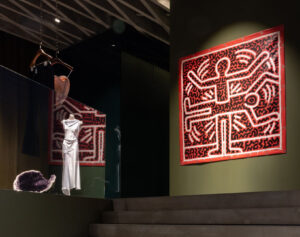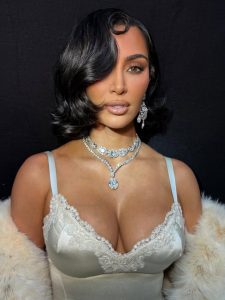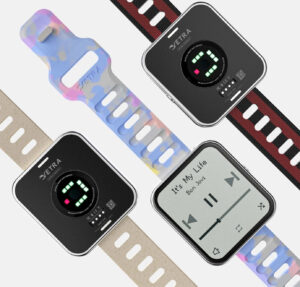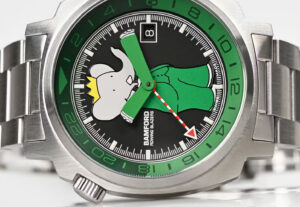

Retail is no longer just about shopping. In an era where online transactions dominate, physical stores must evolve to offer something more—something immersive, inspiring, and impactful. Victoria Beckham’s latest collaboration with Sotheby’s exemplifies this shift, transforming her Mayfair boutique into a temporary art gallery that merges fashion with fine art.
By showcasing works from contemporary masters like Yoshitomo Nara, George Condo, Keith Haring, Yves Klein, and Jean-Michel Basquiat, Beckham has elevated her retail space beyond mere commerce. Instead, she has created a cultural destination, a place where art and fashion converge to form a holistic, multisensory experience. This activation is part of a broader trend in retail, one that blurs the lines between shopping and storytelling, consumption and culture.
Victoria Beckham is not the first to embrace this concept, but her collaboration with Sotheby’s underscores its growing influence. As retail spaces become increasingly experiential, brands must rethink their physical presence to offer something the internet never can: a sense of place, a moment of connection, and an environment that sparks emotion.
The Evolution of Retail: Beyond Transactional Spaces
Retail has always been about more than just buying and selling. Historically, department stores, boutiques, and concept shops have played a crucial role in shaping culture. However, the rapid rise of e-commerce forced a shift in strategy. With the convenience of online shopping, physical stores needed to offer something unique—something that would entice people to leave their homes and engage with a brand in real life.
Over the last decade, we’ve seen a transformation in how brands approach brick-and-mortar spaces. Concept stores, pop-ups, and immersive experiences have become essential tools for drawing in consumers. This evolution signals a fundamental shift: stores are no longer just retail outlets; they are destinations designed to create lasting impressions.
Victoria Beckham’s boutique-turned-gallery aligns perfectly with this trend. It invites visitors not just to browse clothing racks but to engage with art, creativity, and culture in an intimate setting. The collaboration with Sotheby’s doesn’t just elevate her brand—it redefines what a luxury shopping experience can be.
Fashion Meets Fine Art: The Power of Cultural Crossover
The intersection of fashion and art is nothing new. Designers have long drawn inspiration from artists, and vice versa. Some of the most iconic collaborations in fashion history include Yves Saint Laurent’s Mondrian dresses, Louis Vuitton’s partnerships with Takashi Murakami and Jeff Koons, and Dior’s frequent nods to surrealist influences.
What makes Beckham’s activation noteworthy is its execution. Rather than simply incorporating artistic elements into her designs, she has transformed her retail space into a gallery-like experience. The three floors of her Georgian townhouse in Mayfair now serve as a curated exhibition, showcasing works from some of the most influential artists of the past century.
This approach does more than just blur the lines between commerce and culture—it reinforces the idea that luxury is about experience, not just product. High-end consumers are no longer satisfied with simply purchasing an item; they crave stories, exclusivity, and deeper connections with brands. By integrating fine art into her boutique, Beckham taps into this desire, offering a space that feels both aspirational and accessible.
Why Experiential Retail Works
Experiential retail isn’t just a trend—it’s a necessity in today’s competitive landscape. With the rise of digital shopping, brands must give consumers a reason to visit their physical locations. This means creating environments that foster engagement, interaction, and emotional connection.
The success of experiential retail lies in its ability to:
• Create a sense of discovery: Consumers want to feel like they’re stepping into something special, something they can’t replicate online. A pop-up gallery inside a fashion boutique achieves this by offering an exclusive, limited-time experience.
• Encourage longer dwell time: The longer a customer stays in a store, the more likely they are to make a purchase. Art installations, immersive displays, and interactive elements encourage visitors to linger, absorb the ambiance, and explore the brand on a deeper level.
• Foster community and conversation: Unique retail experiences become talking points, drawing in customers who may not have previously engaged with the brand. Beckham’s gallery activation isn’t just for fashion lovers—it attracts art enthusiasts, collectors, and cultural tastemakers.
• Enhance brand storytelling: Today’s consumers are drawn to brands that offer meaning and purpose. By aligning with Sotheby’s and showcasing iconic artists, Beckham reinforces the sophistication and artistry behind her own designs.
The Bigger Picture: The Rise of Retail Destinations
Victoria Beckham’s boutique isn’t an isolated case. Luxury brands and independent retailers alike are increasingly transforming their spaces into cultural hubs.
Other Notable Retail-Art Installations
Dior’s Art-Inspired Installations
Dior has long been at the forefront of blending fashion with fine art. From Raf Simons’ collaborations with contemporary artists to Kim Jones’ recent partnerships with painters and sculptors, the brand consistently integrates artistic expression into its retail environments.
Louis Vuitton’s Global Art Series
The French fashion house has embraced art-driven retail experiences, curating exhibitions within its stores and collaborating with artists like Yayoi Kusama and Richard Prince.
Prada’s Fondazione Prada
Prada took things a step further by establishing an entire cultural institution, Fondazione Prada, dedicated to contemporary art, film, and thought-provoking installations.
Gucci’s ‘Gucci Garden’ in Florence
More than just a boutique, Gucci Garden in Florence functions as a museum, gallery, and retail space, showcasing the brand’s artistic influences and history.
What these examples demonstrate is that retail is no longer confined to product displays and checkout counters. Instead, brands are investing in immersive environments that offer cultural enrichment alongside commercial appeal.
The Future of Retail: What Comes Next?
Victoria Beckham’s Sotheby’s collaboration is a testament to the growing influence of experiential retail. As brands continue to experiment with new ways to engage consumers, we can expect to see even more creative integrations of art, design, and storytelling within physical spaces.
Key Takeaways for the Future of Retail
• Hybrid spaces will become the norm: The future of retail will be defined by multifunctional spaces that merge fashion, art, hospitality, and technology.
• Limited-time experiences will drive engagement: Pop-ups, rotating exhibitions, and exclusive installations will continue to attract foot traffic and media attention.
• Collaboration is key: Expect more partnerships between fashion brands, artists, and cultural institutions to create unique activations.
• Technology will enhance immersion: Augmented reality (AR), virtual reality (VR), and interactive digital elements will further enrich the in-store experience.
Impression
Victoria Beckham’s transformation of her Mayfair boutique into an art gallery is more than just a clever marketing strategy—it’s a reflection of where retail is headed. By blending fine art with high fashion, she has created an experience that is engaging, aspirational, and deeply immersive.
As retail continues to evolve, the most successful brands will be those that embrace storytelling, cultural crossover, and experiential design. In an age where shopping is no longer just about transactions, creating destinations that inspire, educate, and delight will be the key to long-term success.
And if it means we get to see more art in unexpected places? That’s a trend worth celebrating.
No comments yet.









